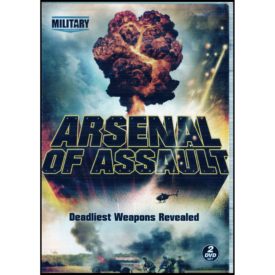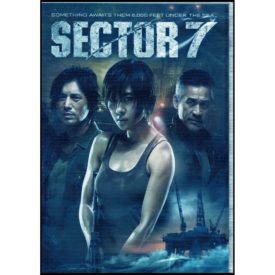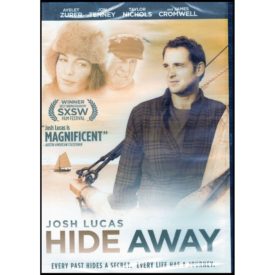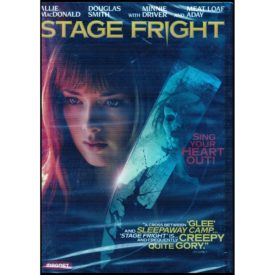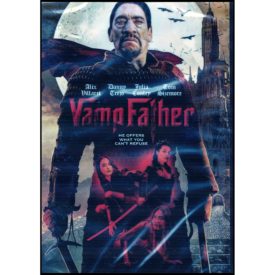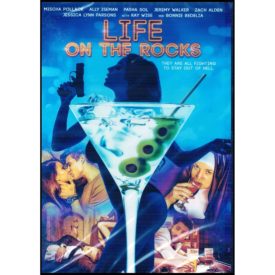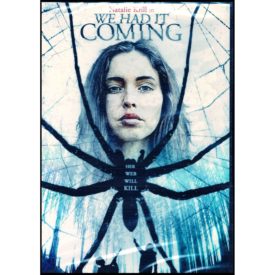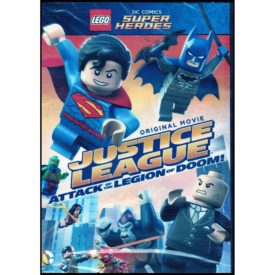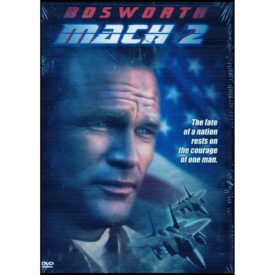Superman II (DVD)
Other Marketplace Price: $17.99Sale Price:$10.49
- Ships Same Day.
- FREE Shipping (U.S. Delivery).
- International Shipping (See Shipping Chart Below).
Out of stock
| Shipping US FREE SHIPPING |
FREE Shipping! |
|---|---|
| Shipping US Expedited 2-3 Day |
US Shipping: $14.99 Unlimited Items. |
| Shipping Canada |
Canada Shipping: Flat $34.99. |
| Shipping Int'l Standard | International Shipping: $64.99 Worldwide. |
| Shipping Local Pick Up |
FREE Local Pick Up in Store |
| Year | Award | Category | Recipient | Result |
|---|---|---|---|---|
| 1982 | Saturn Awards | Best Science Fiction Film | Superman II | Won |
| Best Actor | Christopher Reeve | Nominated | ||
| Best Actress | Margot Kidder | Nominated | ||
| Best Music | Ken Thorne | Nominated |
Broadcast television versions
As with the first film, Alexander and Ilya Salkind prepared a version for worldwide television release that re-inserted unused footage (in this case 24 minutes) into the film. It was through this extended version that viewers first caught a glimpse into the Superman II that might have happened had Richard Donner remained as director. In fact, a majority of the added footage was shot by Donner before Richard Lester became director.
17 of the 24 added minutes were utilized by ABC for its 1984 network premiere. Subsequent ABC airings of the longer version would be cut further for more advertising time. The full 146-minute extended cut was shown internationally, including parts of Canada.
Additional footage
The added footage offers an alternative ending to the film. In the theatrical cut, it is implied that Superman has killed the three Kryptonian villains (going against the strict code that Superman does not kill). In the extended ending, a U.S. polar patrol is shown picking up the three Kryptonians and Lex Luthor, after which Superman, with Lois standing beside him, destroys the Fortress of Solitude.
Among the other lost scenes:
- Superman passes a Concorde jet on his way to Paris. This is not in the video release and was actually an outtake from Superman: The Movie as a bridge between Superman saving Air Force One and his conversation with Jor-El after his first night.
- At the end of the film, Clark Kent bumps into a large bald man, which reminds him to go to the diner to face the obnoxious trucker who beat him up earlier.
- The Phantom Zone villains land outside the Fortress of Solitude with Lex Luthor and Lois Lane, trying to figure out how to get in.
- Extended scenes of the three Kryptonians invasion of the White House, with Zod using a gun and Non frightening a dog.
- Superman cooks a soufflé using his heat vision, during dinner with Lois at the Fortress of Solitude.
- Extended discussion between Zod and Ursa on the Moon.
- In East Houston, a boy tries to escape on horseback, only to be killed by Non, who throws a police siren at him.
Some telecast versions remove the following for content:
- Much violence in the opening White House scene was left out, including Zod murdering several Secret Service agents and Capitol Police officers with an AR-10 assault rifle.
- Much of the bully s lines in the bar ( I don t like your meat anyway! ) was re-edited to ( I don t like you anyway ).
- About 35 seconds of the Battle of Metropolis (Superman flying over Metropolis River) was deleted.
- Some language and profanity were re-dubbed.
Among the footage seen in the international/Canadian telecasts:
- A girl in Japan watching the destruction of East Houston on TV to the disapproval of her mother, who believes it s a violent TV show.
- Longer conversation between Lois and Superman after he destroys the Fortress of Solitude.
- Lex Luthor taking Perry White s coffee during the Times Square battle.
- Lex and Miss Teschmacher admiring the Fortress of Solitude.
- Lex s negotiating with Superman after they leave the fortress is longer.
- Zod and his cronies being arrested by Arctic Patrol officers.
In 2004, the fan-restored DVD known as Superman II: Restored International Cut was released through many Superman fan sites. It featured extended scenes pulled from international television broadcasts over the years. Warner Bros. threatened legal action over the bootleg release.
The Richard Donner Cut
During the production of Superman Returns, Warner Bros. acquired the rights from Marlon Brando s estate to use the late actor s footage from Superman in the film. Shortly after, Ilya Salkind confirmed that Donner was involved in the project to re-cut Superman II using Brando s unused footage. Editor Michael Thau worked on the project alongside Donner and Tom Mankiewicz, who supervised the Superman II reconstruction. Despite some initial confusion, Thau confirmed that all the footage shot by Donner in 1977 was recovered and transferred from a vault in England.
The new edition, titled Superman II: The Richard Donner Cut, was released on DVD, HD DVD, and Blu-ray on November 28, 2006. In order to make Donner s vision of Superman II feel less incomplete, finished scenes by Lester that Donner was unable to shoot were incorporated into the film as well as the screen tests by Reeve and Kidder for one pivotal scene. The film also restores several cut scenes including Marlon Brando as Jor-El, an alternate prologue and opening sequence at the Daily Planet that omits the Eiffel Tower opening from the original, as well as the original scripted and filmed ending for Superman II featuring Superman reversing time before it was cut and placed at the end of the first film.
In other media
Comics
- Superman s publisher DC Comics published a commemorative magazine of Superman II in 1981. Published as DC Special Series #25, it was produced in Treasury format and included photos and background photos, actor profiles, panel-to-scene comparisons, and pin-ups.
- Near the end of the film, Clark uses a super-kiss to make Lois forget he is Superman. While this was a real power Superman had in the comics (originally displayed in Action Comics #306), it was rarely used, and eventually eliminated after the 1985–1986 reboot of the character following the limited series Crisis on Infinite Earths.
- In the film, Lex Luthor enters the Oval Office to make a deal with the Kryptonians, trading information about Superman s whereabouts for control of Australia and Cuba. By the end of the scene, he is sitting behind the President s desk. In the comics (in the year 2000), Lex Luthor ran for President of the United States and won.
- In 2006, the Superman comics themselves adapted elements from the Superman movies, specifically the ice-like look of Krypton, and Jor-El banishing the criminals to the Phantom Zone. Ursa and Non made their first appearances in the comic book continuity. (This was facilitated in the Last Son story arc, co-written by Richard Donner.)
- In 2021, a Superman comic entitled Superman 78 was released. Written by Robert Venditti and illustrated by Wilfredo Torres, the comic is set in Donnerverse continuity, acting as an alternative continuation of the first two films, while ignoring other Superman films.
Television
- In the television series Smallville, much of the imagery and concepts of the first two Salkind/Donner Superman films, has been revived as a conscious homage to the film series by the show s creators. These include the ice-crystal Fortress of Solitude, the spinning square in space to represent the Phantom Zone, and the continued presence of the deceased Jor-El as a disembodied counselor and teacher to young Clark/Kal-El. Terence Stamp, who played General Zod in the first two films, provided the voice of Jor-El for the series. Christopher Reeve made two appearances on the show as Dr. Virgil Swann, a disabled scientist who had acquired knowledge of Krypton to pass on to Clark, before Reeve s death in 2004. A section of John Williams Superman theme was included when Reeve made his first appearance, and was later used in the series finale. Margot Kidder, Marc McClure (Jimmy Olsen), and Helen Slater (Supergirl) have also made appearances on the show. Annette O Toole (Lana Lang in Superman III) played Martha Kent.
- In the animated series Young Justice, in the episode Satisfaction of its second season, Lex Luthor appears briefly talking to one of his assistants on the phone, who is called Otis, as a reference to the character in the films.
New
Warner Home Video
2005-02-08
Adult
Pg
Warner Home Video
DVD
Movie
B000059XUI
085391112020
1980
1981-06-19
127
2h 7min
Awards, 3 wins & 7 nominations
Richard Lester, Richard Donner
Jerry Siegel, Joe Shuster, Mario Puzo
Gene Hackman, Christopher Reeve, Margot Kidder
Alexander Salkind, Ilya Salkind, Pierre Spengler
Ken Thorne
Robert Paynter, Geoffrey Unsworth
John Victor Smith
Lynn Stalmaster
John Barry, Peter Murton
Terry Ackland-Snow, Ernest Archer, Charles Bishop, Norman Reynolds
Peter Howitt, Peter Young
Yvonne Blake, Sue Yelland
Stuart Freeborn, Pat McDermott, Bobbie Smith, Nereida Soto, Joan White, Nick Dudman, Graham Freeborn, Kay Freeborn, Nick Maley, Basil Newall
Cecil F. Ford, Tim Hampton, Allan James, Vincent Winter
Roy Button, Raoul Girard, Robert Lynn, Terry Madden, Christopher Newman, Paul Storey, Dusty Symonds, Gareth Tandy, David Tomblin
Terry Apsey, Ivor Beddoes, Larry Cleary, Peter Dunlop, Maurice Fowler, John Lanzer, Jim Morahan, Bob Sherwood, Mal Zawadzki, Alan Cassie, Mick Chubbock, David Coley, Charles Cottrell, Don Dossett, Peter Fern, Robert Jackson, Paul Laugier, John New, Bob Sherwood
Roy Charman, Mike Hopkins, Gerry Humphreys, Archie Ludski, Don Sharpe, Paul Smith, Sarah Vickers, Jonathan Andrews, Peter Desbois, Richard Lightman, Regina Mullen, Mike Tucker
Colin Chilvers, Robert Harman, Jimmy Benson, Chris Corbould, Neil Corbould, Keith Dyett, John Evans, David Harris, Garth Inns, Mark Meddings, Brian Warner
Ivor Beddoes, Denys N. Coop, Dick Dimbleby, Dave Docwra, Doug Ferris, Roy Field, Peter Hammond, Peter Harman, Derek Meddings, Zoran Perisic, David Speed, Peter Watson, Paul Wilson, Janice Body, Martin Body, Costas Charitou, Peter Dorme, Keith Holland, John Inglis, Andrew Kelly, Tad Krzanowski, Jim Machin
Vic Armstrong, Alf Joint, Jacob Rupp, Paul Weston, Bob Anderson, Vic Armstrong, David Brandon, Cyd Child, Tim Condren, George Lane Cooper, Jack Cooper, Sue Crosland, Graeme Crowther, Clive Curtis, Billy Dean, Peter Diamond, Joe Dunne, Stuart Fell, Tex Fuller, John Gallant, Nick Gillard, Tom Hegarty, Billy Horrigan, Arthur Howell, Alf Joint, Wendy Leech, Mark McBride, Peter Munt, Valentino Musetti, Terence Plummer, Greg Powell, Terry Richards, Doug Robinson, Colin Skeaping, Stuart St. Paul, Johan Thorén, Chris Webb, Paul Weston, Terry Yorke
John Campbell, Steve Claydon, Freddie Cooper, David Garfath, Ginger Gemmel, Ron Goodman, Keith Hamshere, John Harris, Peter MacDonald, John Morgan, Jeff Paynter, Cervin Robinson, Jonathan Taylor, Chic Waterson, David Wynn-Jones, George Beavis, George Binnersley, David Cadwallader, Stephen Drury, Brian Ellis, Philip Grosvenor, Nick Houston, Martin Hume, Mark Ratering, Nick Schlesinger, Danny Shelmerdine, Jon Sorensen, Jimmy Spoard, Chris Warren
Debbie McWilliams
Betty Adamson, Graham Churchyard
Nicolas Gomez, Peter Holt, Bob Mullen, Colin Wilson, Russ Woolnough, Paul Hamill
Allan James
Robert Hathaway, John Richards, Ken Thorne, Eric Tomlinson, Derek Watkins, John Williams, Eric Crees
Pamela Davies, Katya Kolpaktchy, Doris Martin, Elaine Schreyeck
Tom Bishop Sr.
Frans J. Afman, Trudy Balen, Joy Bayley, Chris Coles, Quinn Donoghue, Sue Hausner, Geoffrey Helman, Graham Henderson, Bobbie Johnson, Harry Lange, Tom Mankiewicz, Maria Monreal, Douglas Noakes, Patricia O'Reilly, Mahesh Rajguru, Armand Rubin, Alexander Salkind, Christine Samways, Robert Simmonds, Michele Tandy, Betty Williams, Chris Bunn, Tony Dyson, Alan Harris, Craig Miller, Sarah Nichols, Chris Parsons, Howard R. Schuster, Paul Tivers, Marc Wolff
Howard R. Schuster
Action, Adventure, Sci-Fi
Dovemead Films, Film Export A.G., International Film Production
USA, UK, Canada
English, French, Russian
PG
6.8
107564
83
Superman II is a 1980 superhero film directed by Richard Lester and written by Mario Puzo and David and Leslie Newman from a story by Puzo based on the DC Comics character Superman. It is the second installment in the Superman film series and a sequel to Superman (1978). It stars Gene Hackman, Christopher Reeve, Terence Stamp, Ned Beatty, Sarah Douglas, Margot Kidder, and Jack O Halloran. The film was released in Australia and mainland Europe on December 4, 1980, and in other countries throughout 1981. Selected premiere engagements of Superman II were presented in Megasound, a high-impact surround sound system similar to Sensurround.
In 1977, it was decided by producers Alexander and Ilya Salkind that they would film both Superman and its sequel simultaneously, with principal photography beginning in March 1977 and ending in October 1978. Tensions rose between original director Richard Donner and the producers in which a decision was made to stop filming the sequel, of which 75 percent had already been completed, and finish the first film. Following the release of Superman in December 1978, Donner was controversially fired as director, and was replaced by Lester. Several members of the cast and crew declined to return in the wake of Donner s firing. To be officially credited as the director, Lester re-shot most of the film in which principal photography resumed in September 1979 and ended in March 1980.
The film received positive reviews from film critics who praised the performances from Reeve, Stamp and Hackman, the visual effects, and humor. It grossed $190 million against a production budget of $54 million, a box office success but less than its predecessor. A sequel, Superman III, was released in June 1983, for which Lester returned as director.
A director s cut of the film, restoring the original vision for the film under Donner s supervision, titled Superman II: The Richard Donner Cut, was released on November 28, 2006 in various home media formats.
$54,000,000 (estimated)
$14,100,523
$108,185,706
$108,185,706
Superhero,second part,sequel,based on comic,dc comics






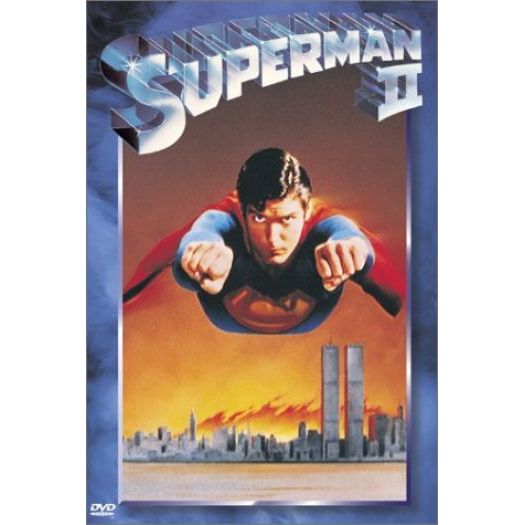
 Item is New Stock.
Item is New Stock. 